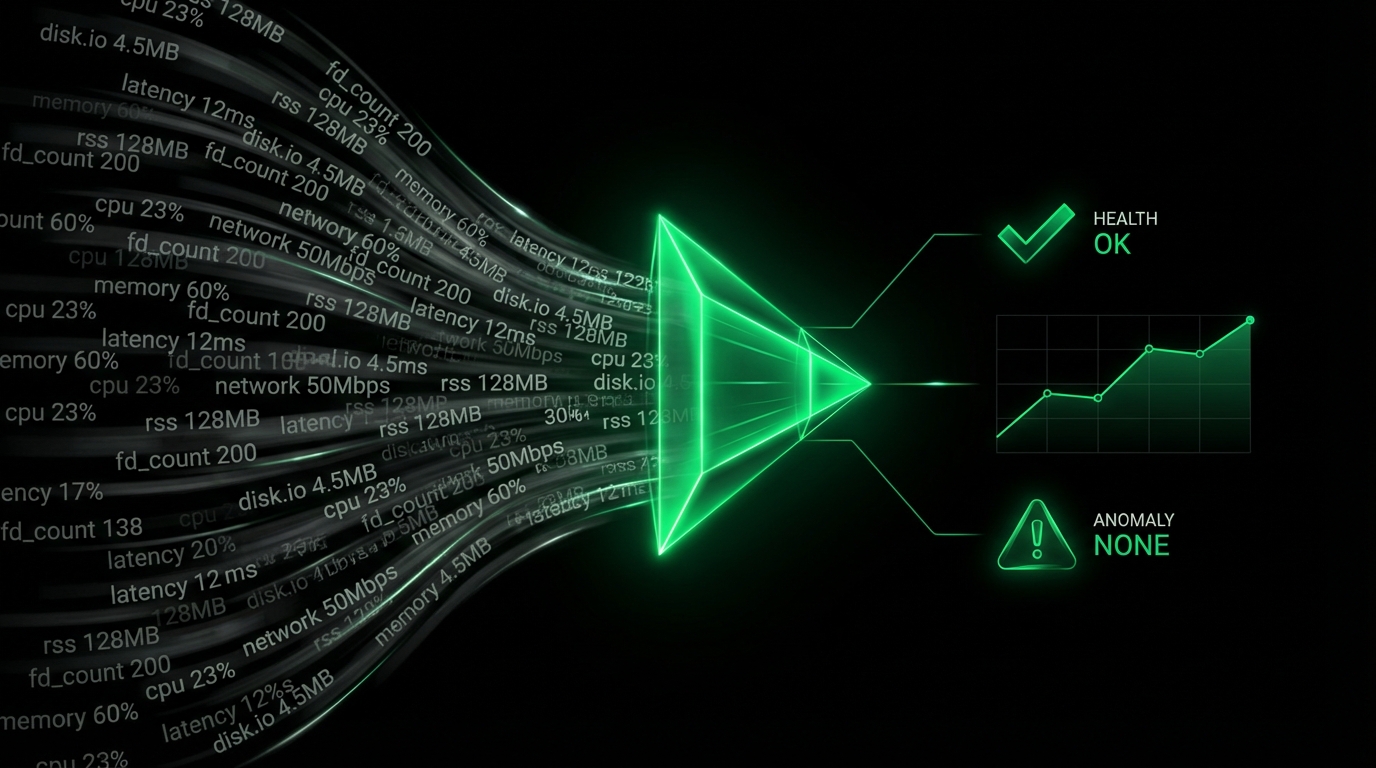CockroachDB Monitoring
CockroachDB is a cloud-native distributed SQL database designed to scale horizontally and survive datacenter failures. Monitoring CockroachDB is crucial for maintaining the health, performance, and reliability of your database infrastructure. Netdata provides a comprehensive CockroachDB monitoring tool that enables real-time visibility and enhanced troubleshooting capabilities to ensure optimal database operations.
What Is CockroachDB?
CockroachDB is a distributed SQL database, similar in functionality to Google Spanner, designed to deliver strong fault tolerance, consistency, and scalability across distributed environments. Its architecture allows for seamless scaling and resilience, making it an ideal choice for modern, high-demand database operations.
Monitoring CockroachDB With Netdata
Using Netdata, you can monitor CockroachDB effectively with the CockroachDB collector. Netdata’s intuitive interface provides real-time insights into CockroachDB’s performance metrics, helping you keep your databases running smoothly. You can try it out with our Live Demo or directly sign up for a free trial to start monitoring your databases today.
Why Is CockroachDB Monitoring Important?
Monitoring CockroachDB is essential for:
- Detecting performance bottlenecks early.
- Ensuring high availability and disaster recovery.
- Maintaining optimal data throughput and response times.
- Identifying and troubleshooting problems quickly.
What Are The Benefits Of Using CockroachDB Monitoring Tools?
Netdata’s CockroachDB monitoring tool offers:
- Real-time detailed metrics visualization.
- Comprehensive alerting capabilities for proactive monitoring.
- Easy integration and configuration without complex setup.
- Historical data analysis for pattern and trend detection.
Understanding CockroachDB Performance Metrics
Netdata collects a wide array of CockroachDB metrics to facilitate in-depth monitoring. Here are some key metrics you should track:
CPU Utilization
- cockroachdb.process_cpu_time_combined_percentage: Tracks combined CPU time as a percentage, normalized to the number of cores.
- cockroachdb.process_cpu_time_percentage: User and system CPU time usage.
Memory Usage
- cockroachdb.process_memory: Memory utilization in KiB, indicating RSS memory consumption.
Disk Usage and Operations
- cockroachdb.host_disk_bandwidth: Monitors disk read/write bandwidth.
- cockroachdb.host_disk_operations: Tracks cumulative disk operations.
Network Performance
- cockroachdb.host_network_bandwidth: Network data transfer rates.
- cockroachdb.host_network_packets: Counts network packets sent and received.
SQL Operations
- cockroachdb.sql_statements_total: Total number of SQL statements executed.
- cockroachdb.sql_errors: Total SQL statement and transaction errors.
Cluster Health
- cockroachdb.live_nodes: Number of live nodes in the cluster.
- cockroachdb.node_liveness_heartbeats: Heartbeats indicating the liveness of nodes.
Here’s a table summarizing these key performance metrics:
| Metric Name | Description |
|---|---|
| cockroachdb.process_cpu_time_combined_percentage | Combined CPU Time Percentage, Normalized 0-1 by Cores |
| cockroachdb.process_memory | Total memory usage in KiB |
| cockroachdb.host_disk_bandwidth | Disk read/write bandwidth |
| cockroachdb.host_network_bandwidth | Network bandwidth usage |
| cockroachdb.sql_statements_total | Total number of SQL statements |
| cockroachdb.live_nodes | Live nodes in the cluster |
Advanced CockroachDB Performance Monitoring Techniques
Advanced monitoring includes anomaly detection, long-term trend analysis, and correlating application performance with infrastructure metrics. With Netdata, you can configure custom alerts and dashboard views, enhance observability, and set up efficient incident response workflows.
Diagnose Root Causes Or Performance Issues Using Key CockroachDB Statistics & Metrics
Netdata provides detailed statistics to quickly diagnose root causes and performance issues. For instance, monitoring metrics like cockroachdb.process_cpu_time or cockroachdb.sql_errors can pinpoint CPU overloads or SQL execution issues. Start optimizing with Netdata’s Live Demo or sign up to Netdata and revolutionize your monitoring strategy today!
FAQs
What Is CockroachDB Monitoring?
CockroachDB monitoring involves tracking and analyzing performance metrics to maintain the optimal operation of a CockroachDB database.
Why Is CockroachDB Monitoring Important?
It ensures high performance, availability, and helps in troubleshooting issues in real-time, preventing downtime and data loss.
What Does A CockroachDB Monitor Do?
A CockroachDB monitor collects and analyzes data on database performance, resource utilization, and operational health to keep systems running efficiently.
How Can I Monitor CockroachDB In Real Time?
You can monitor CockroachDB in real-time with Netdata. Sign up here to start leveraging fine-grained monitoring capabilities and keep your databases healthy.









